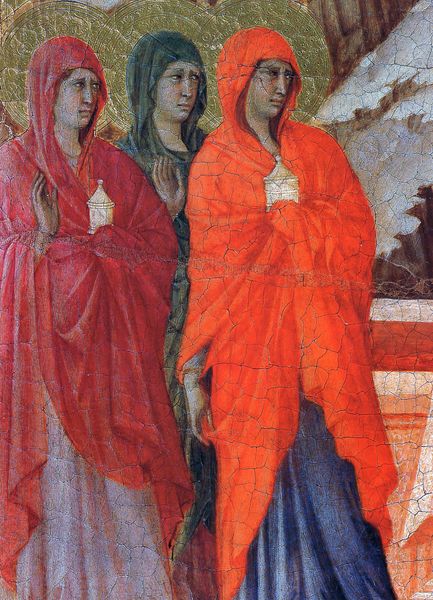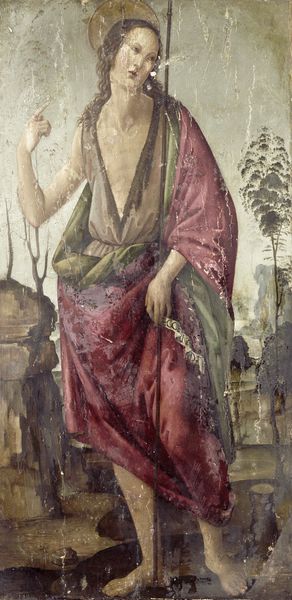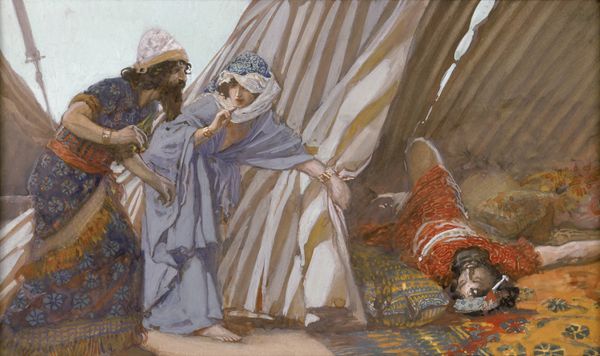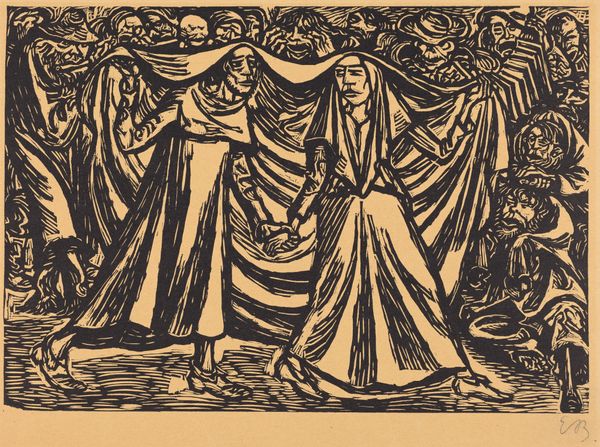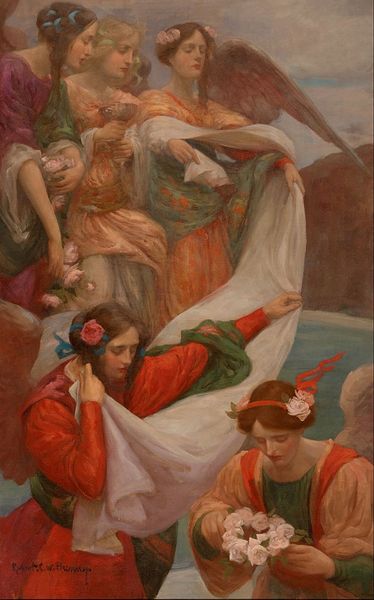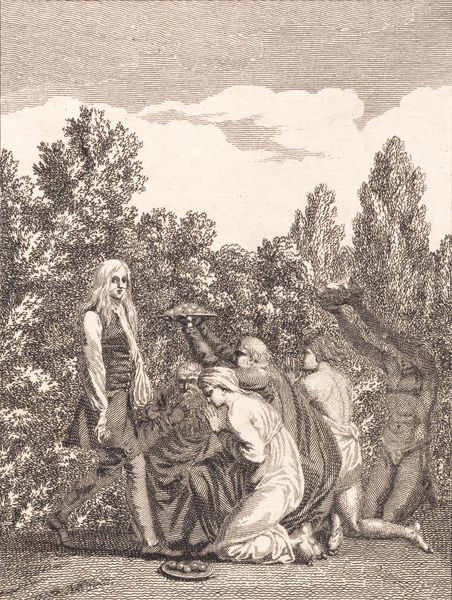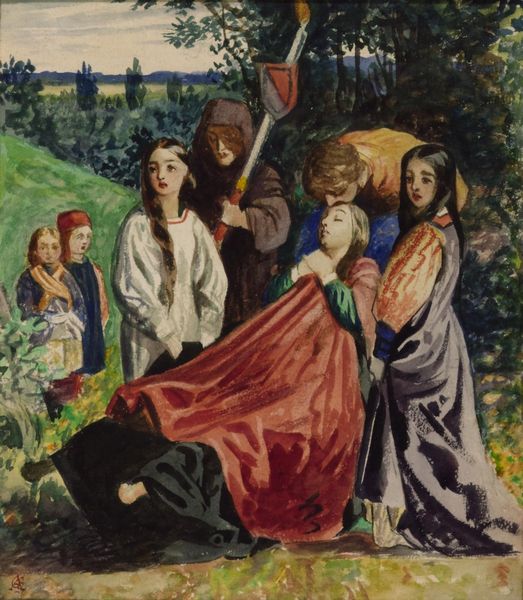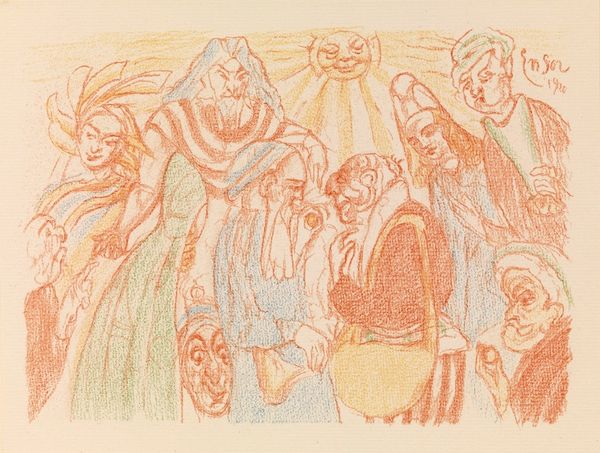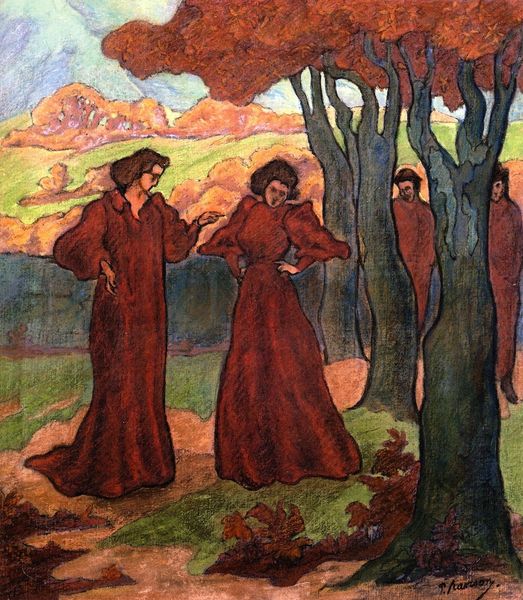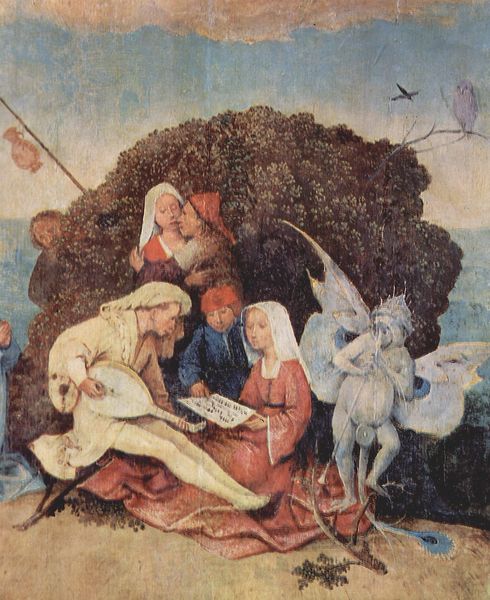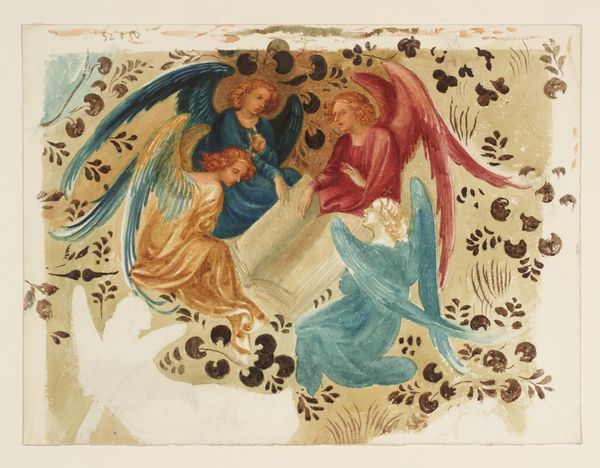
Dimensions: support: 749 x 692 mm
Copyright: © Tate | CC-BY-NC-ND 4.0 DEED, Photo: Tate
Editor: Henry Lamb's painting, "Irish Girls," presents three figures in a tight composition. There’s something both intimate and unsettling about it. How do you interpret the symbolism at play here? Curator: Notice how Lamb uses the shawls as both adornment and partial veils. What cultural memories do these evoke? Perhaps a sense of protection, but also concealment? Think about the traditional role of women, especially in rural settings. Editor: That's interesting. The shawls do seem to separate them, even while they're grouped together. Curator: Precisely. The symbolism extends to the landscape, a backdrop that seems both idyllic and distant. The girls appear almost staged against it. Their gaze suggests more than their mere presence. Editor: So, the painting is a conversation about identity and place. I never considered that. Thank you for sharing your knowledge. Curator: My pleasure. It is a thought-provoking piece, and one that has left me thinking about symbols in art in a new way.
Comments
Join the conversation
Join millions of artists and users on Artera today and experience the ultimate creative platform.
tate 6 months ago
⋮
Lamb first visited Ireland in 1912. This study was made in Gola, a tiny island off the coast of Donegal, where he made many paintings of the Irish fishermen and their wives. Lamb reported that 'the weather is hopelessly bad'. This work shows three of the islanders wrapped up warm to protect themselves from the Atlantic gales. The bright colours and simplified forms reflect the influence of Gauguin. Lamb's paintings were shown alongside the work of French artists in the Second Post-Impressionist exhibition, organised by Roger Fry at the Grafton Galleries in London in 1912. Gallery label, September 2004
